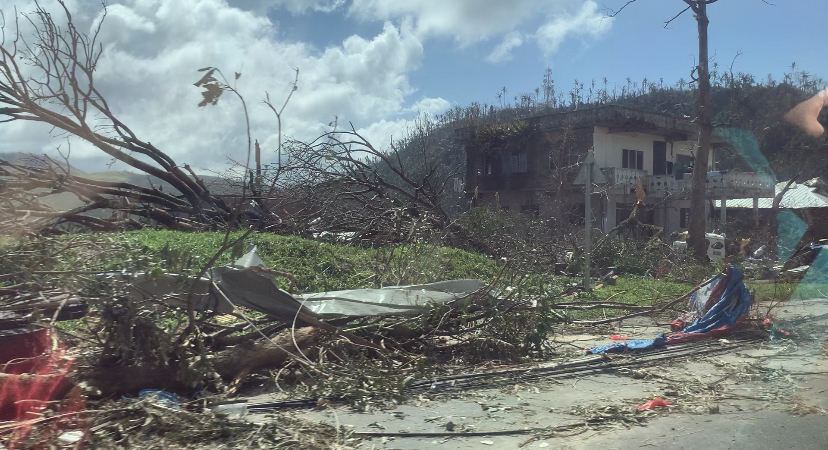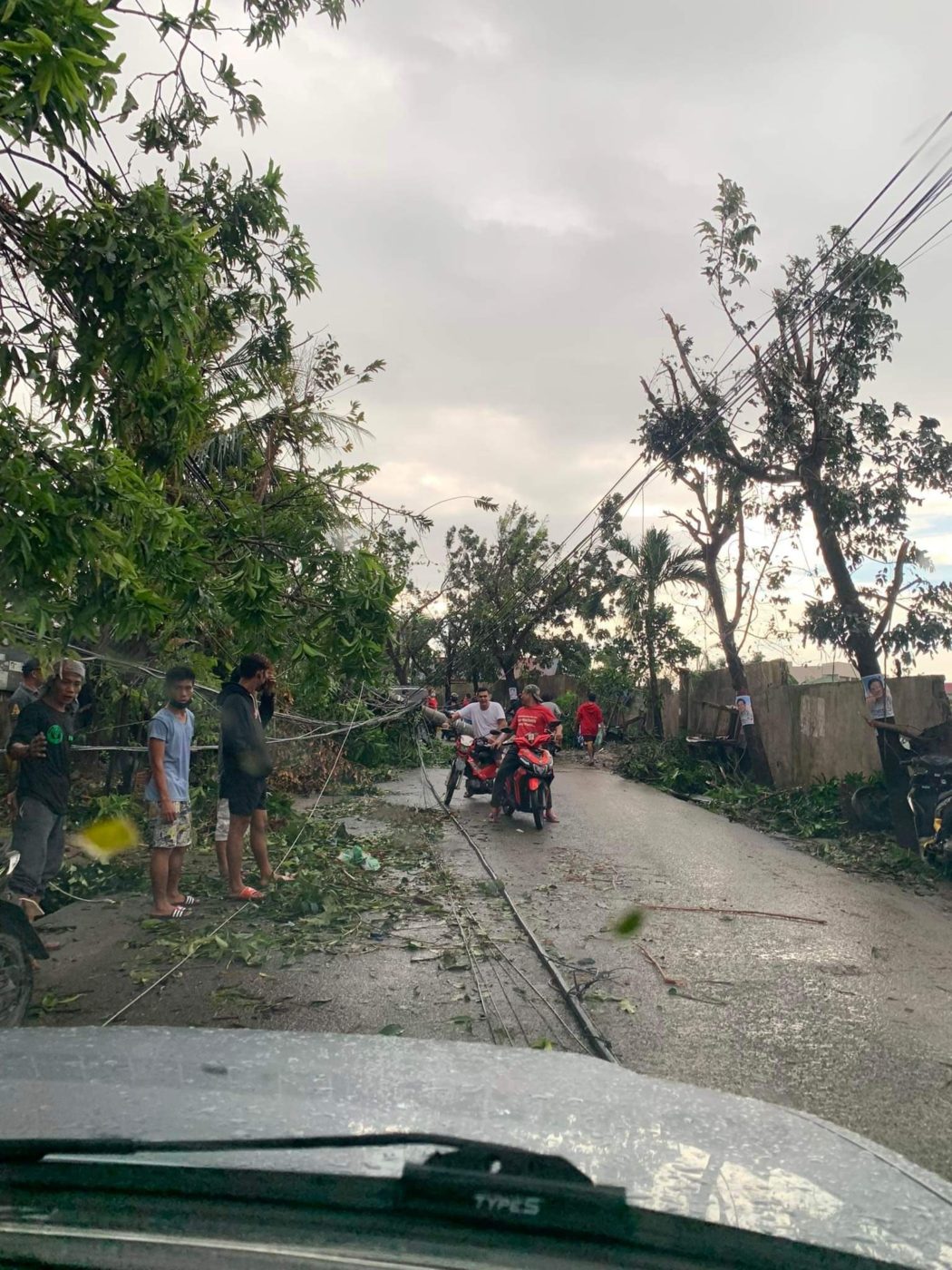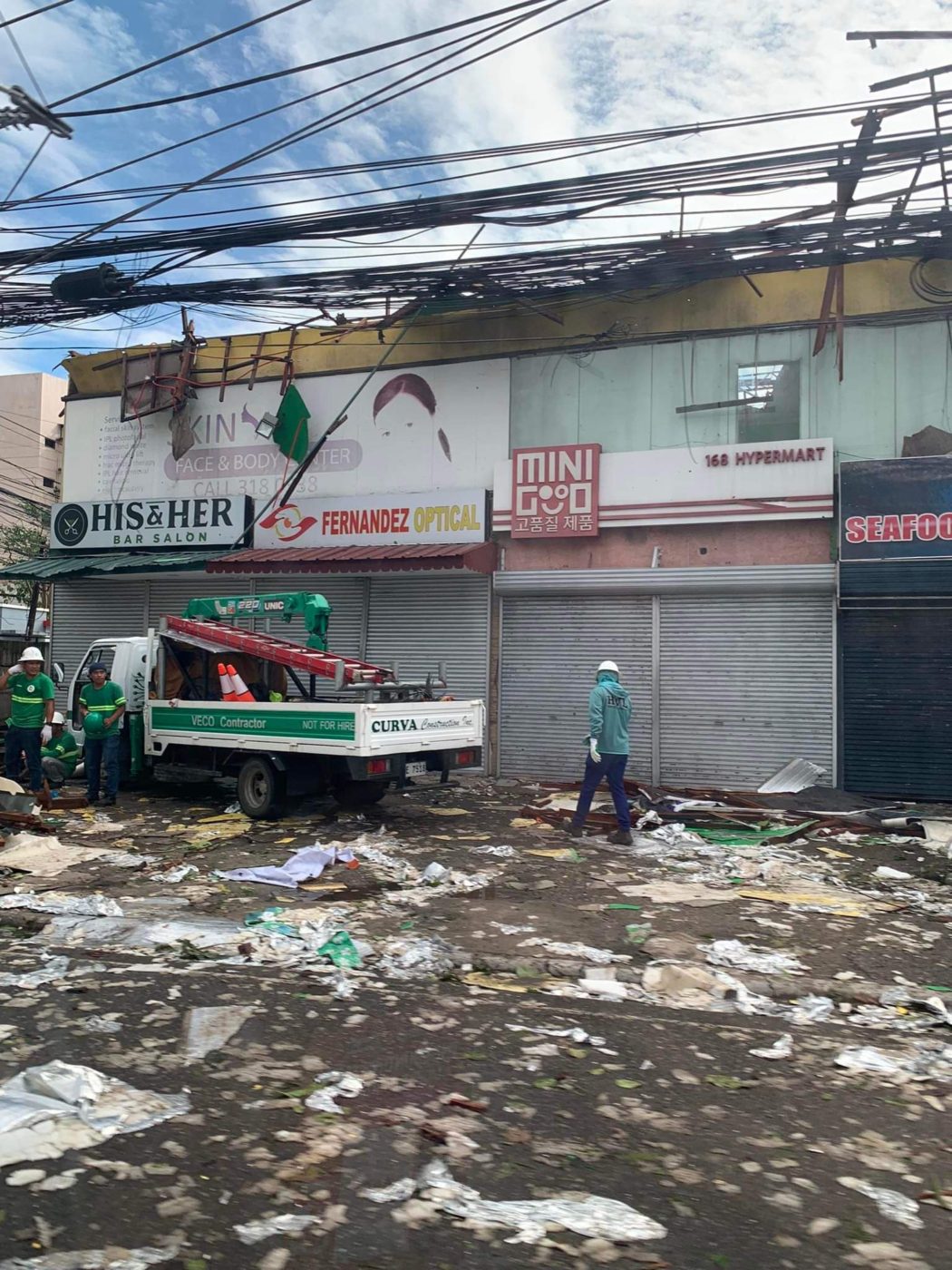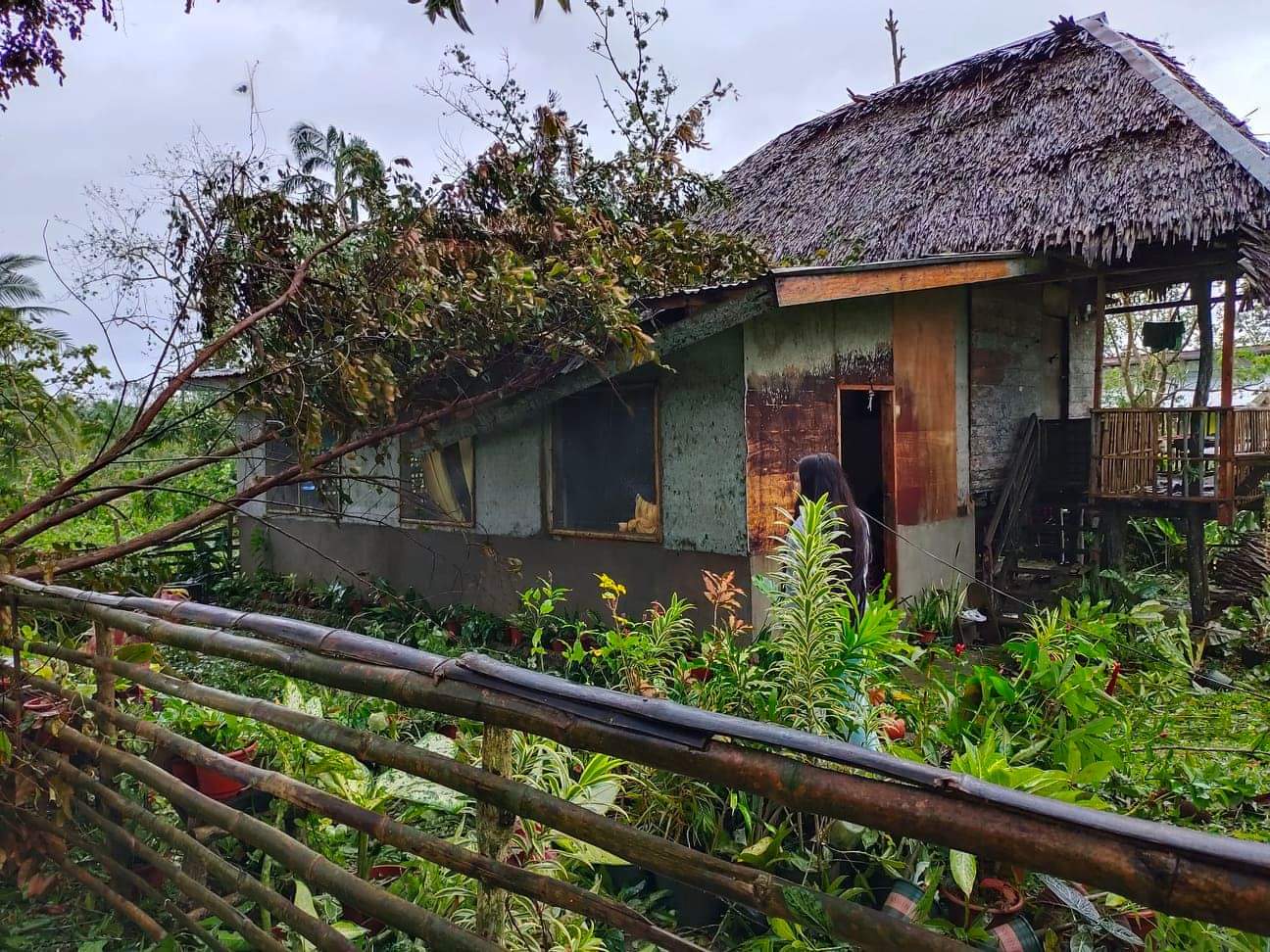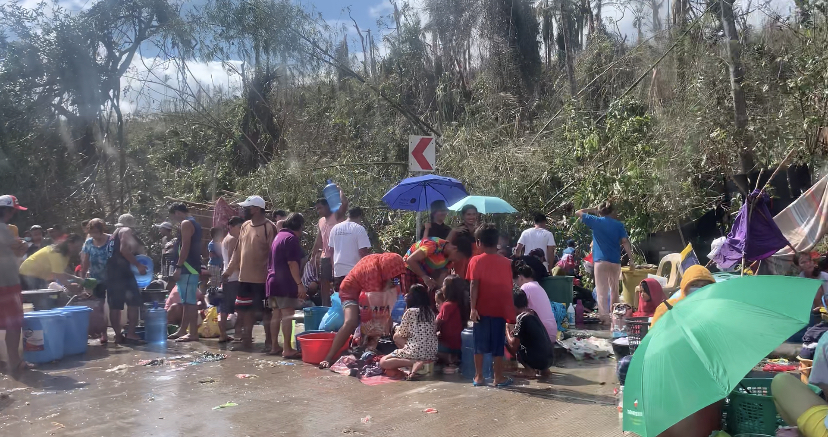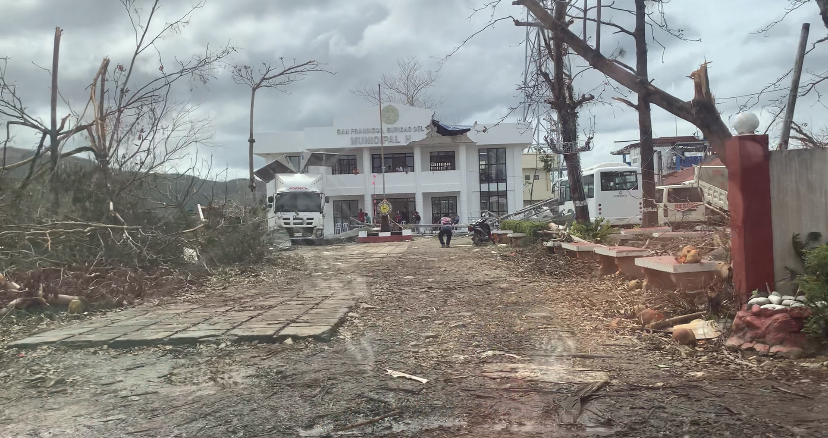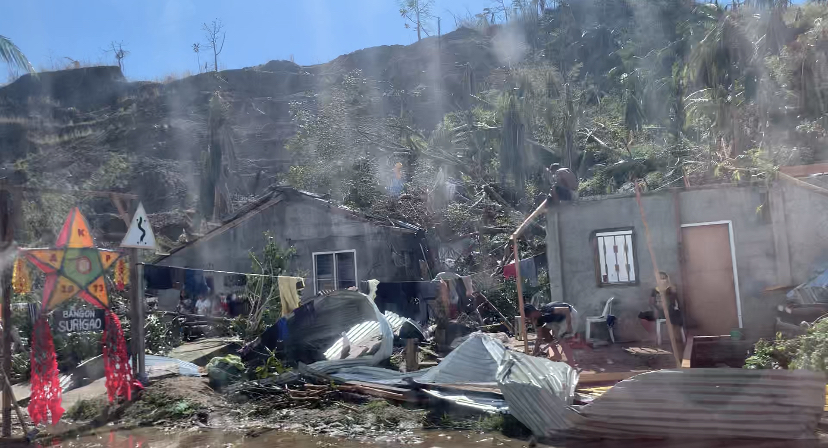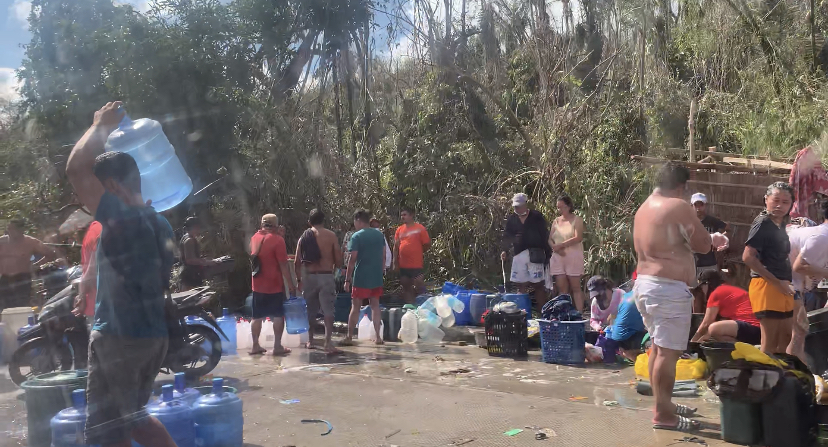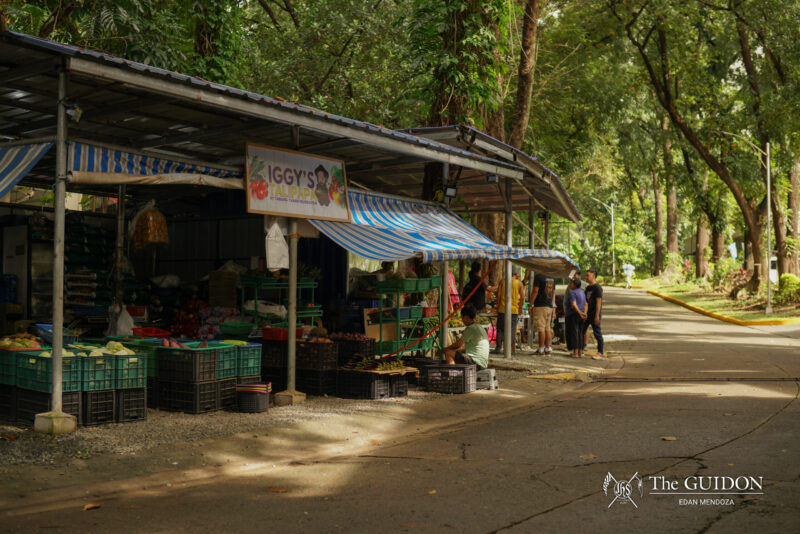HEAT LIGHTNING coursed through the December 16 Philippine sky, silent and deadly like the storm that caused it. It was only on the morning of Typhoon Odette’s landfall that the US-based Joint Typhoon Warning Center would upgrade its status from a tropical cyclone to a Category 4 super typhoon. According to them, the intensification was sudden and rapid overnight. However, Odette’s effects on the multiple affected islands in the Visayas and Mindanao could span lifetimes.
Two months have now passed, yet there still seems to be no end in sight to the devastation and trauma that those affected have received.
The Queen steps down
The entire Cebu province was brought down to its knees after the storm. Odette would make its landfall on the Queen City at nighttime, wreaking havoc in the darkness and uncertainty.
Elian del Mar, a freshman in University of the Philippines (UP) Cebu, recounts how the night went. At the onset of the storm, the first thing to go was the lights, followed by the signal. Strong winds came after, buffeting everything in its course. “We could hear our neighbor’s roofs being torn out,” Elian says.
These destructions would only concretize the day after impact. One by one, all resources from electricity to signal would be stripped from the island. For Cebuanos like Elian, it would be the search for water that proved most challenging. “Our running water had been cut off, so we had to ration the water from the cistern below the water tank of our village,” he recalls.
This would serve as one of many tactics that Cebuanos have resorted to for a drop of water. Because of the shortage, the fire and water departments started opening up hydrants for people to collect water from, while factories distributed water to six-hour-long lines.
Clearly, help was not scarce, but it seemed inconsequential to the damage. “I felt very helpless at times because it seemed like nothing could be done in order [to] uplift myself from the situation that we were in,” Elian mentions.
The local government was overwhelmed with the chaos, especially since they promised Sinulog celebrations would push through. This did not happen except for a commissioned dress named “Hope” that the Cebuano governor wore to commemorate the suffering province.
While Cebuano authorities had time to plan out Sinulog festivities, their neighboring province was too focused on getting back on their feet to play dress-up.
The Jewel dims out
At 7:00 PM on the night of landfall, the Philippine Atmospheric, Geophysical and Astronomical Services Administration (PAGASA) observed Typhoon Odette as it settled at the northern part of Bohol, perching over the province for hours on end. The Jewel of the Philippines suffered tremendously after the storm, losing not just electricity and water, but also their most valuable asset: Natural resources.
“Everything was a mess,” Irish Cruz, a freshman in the University of San Carlos, says about the situation in Tagbilaran City and nearby communities. When she stepped outside the day after, Irish noticed all the trees around her had been completely uprooted, leaving golden bald spots of what used to be green pasture.
Under Odette, four of Bohol’s famous chocolate hills were completely eroded. The wide-eyed tarsiers that have become the mascots of Bohol’s tourism were also severely affected. Only two of 215 of tarsiers housed by the Bohol Tarsier Conservation Area were spotted out and about.
However, it wasn’t Tagbilaran City that suffered the greatest damage. Municipalities of Ubay and Loboc were completely wrecked. “If you have not heard the news, almost all standing establishments–houses, marketplaces, or churches–were totally wiped out,” Irish says.
She adds that the Loboc River, a famous tourist destination and integral structure in Bohol, rose to dangerously high levels and completely submerged many parts of the municipality. “Half of Loboc can not be seen,” she remarks.
The struggle to survive was vicious, but Irish points her anger towards miscommunication among the people and their local government. While authorities only knew the magnitude of the storm hours before, Irish says that there should have still been more active measures. Many citizens were left underestimating about the storm until it actually happened.
“Maybe if they had been more active in updating us… maybe, just maybe, deaths would have been minimized and the people would have prepared more,” Irish laments.
To date, Odette has claimed 111 lives in Bohol.
While the devastation Odette brought to Bohol was gaining traction online, it was the wreckage in Surigao that would go viral first.
The Shangri-la falls through
Before the storm landed impact on many other Philippine islands, it would claim Surigao first. Early on the day of landfall, videos of a tumbledown Siargao Sports Complex started making rounds online and signified to many that this storm would not end overnight.
“My experience with Odette felt like a nightmare,” says UP Cebu freshman Natalie Senaca. She had to evacuate from her coastal town in Surigao del Norte because of the dangerous winds. “The winds were so strong to the point where sturdy buildings shook. It even toppled heavy trucks.”
The winds would also be the main culprit for communication to cease on every island touched by the storm. Surigao would be no exception with their telecommunication lines failing even before landfall. Natalie recounts how she and her family had to drive to different cities in Mindanao to get even just a bar of signal to contact loved ones and see if they were alive.
For Natalie, seeing nearby coastal homes be devoured by the storm left a scar in her memory she may never recover from. “I thought I knew what the concept of ‘losing hope’ meant before, but it was only after Odette that I realized what it felt like,” she says.
This sadness was accompanied by great anger. She cites that there was not only a lack of information dissemination, but also delays in distributing relief goods from the local government down to those affected. This provoked looting among the people.
Many Filipinos had no other alternative but to resort to their own resources to survive. Odette may have sunk its teeth into these provinces, but the hope rooted in every Filipino has allowed them to persevere despite the sting.
The Pearl breaks the surface
The sting did a number on all those affected, but if there’s one Filipino trait that never dies out, it’s bayanihan. Natalie says, “Due to the fact that help came late, people had to help each other in the community.”
The lack of necessary resources proved difficult, but everyone was sharing whatever they could. Elian recalls how those who had generators or solar panels offered up their homes as WiFi and charging stations. Malls, cafés, parks, and churches would do the same.
“The morning after the typhoon, relief efforts were immediately made,” Irish says, awestruck by how many affected Boholanos still took part in these. Civilian-led initiatives like Juan PH, Bangon Bohol, and Sagip Surigao raised substantial funds to provide aid for the victims.
When the storm left nothing to celebrate, people clung to hope. “I hope that the sense of community I felt after the storm can be continued,” Elian says.
On the other hand, Irish has been confident from the start that her province would bounce back. “Bisaya people are known to be strong. Whatever challenges are thrown at us, we can conquer them,” she shares.
The storm forced many to grow under harsh conditions, but even two months after, there is still a lot of learning left to do. Life still goes on in these three provinces, though much different than what it used to be. The call for help, however, has never ceased.
While it’s easy to get lost in the whirlwind of events, the stories of Filipinos who have persevered despite suffering deserve the most attention. These are real people, real places, and real storms which have shaken our country many times.
But none ever strong enough to take us down.

